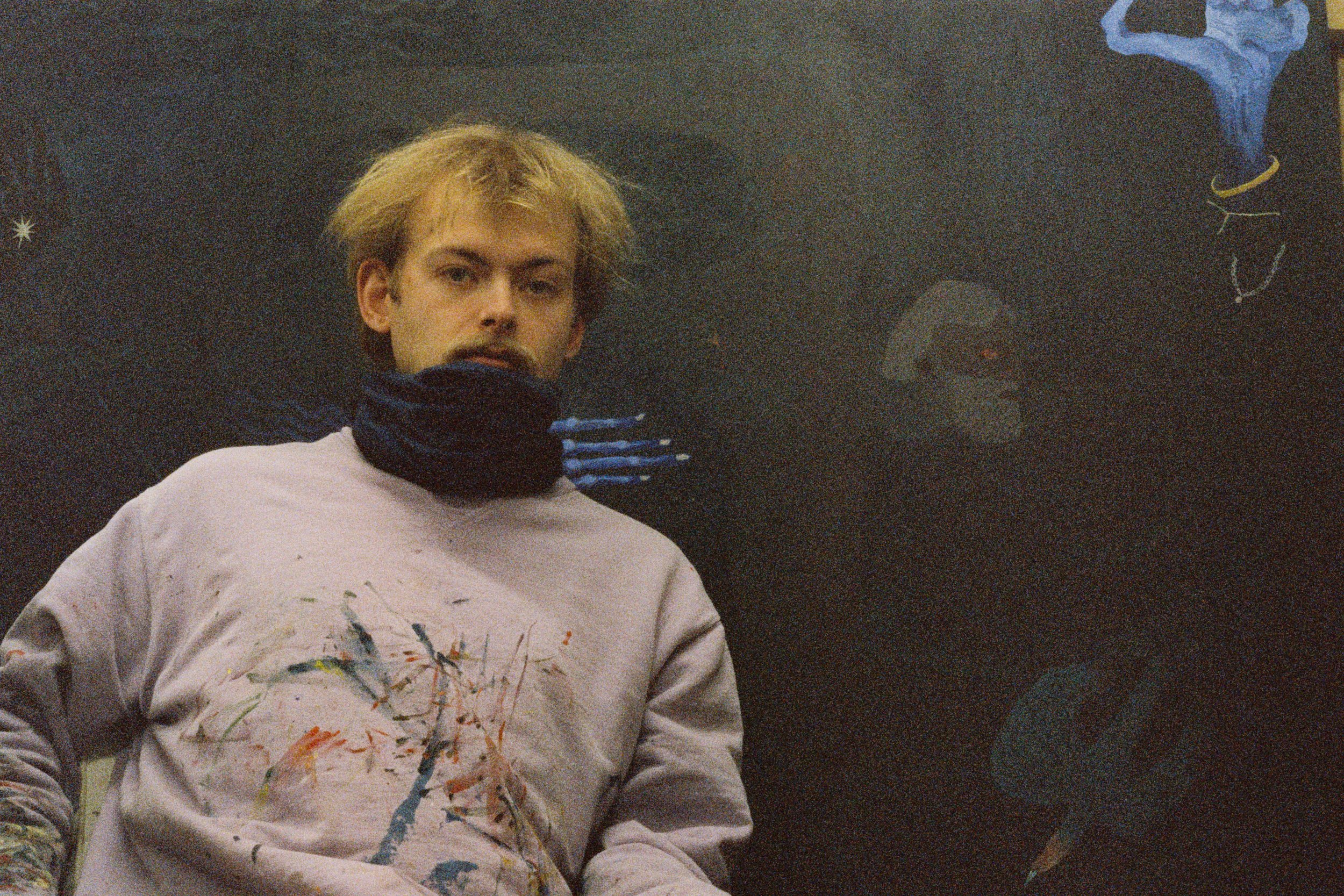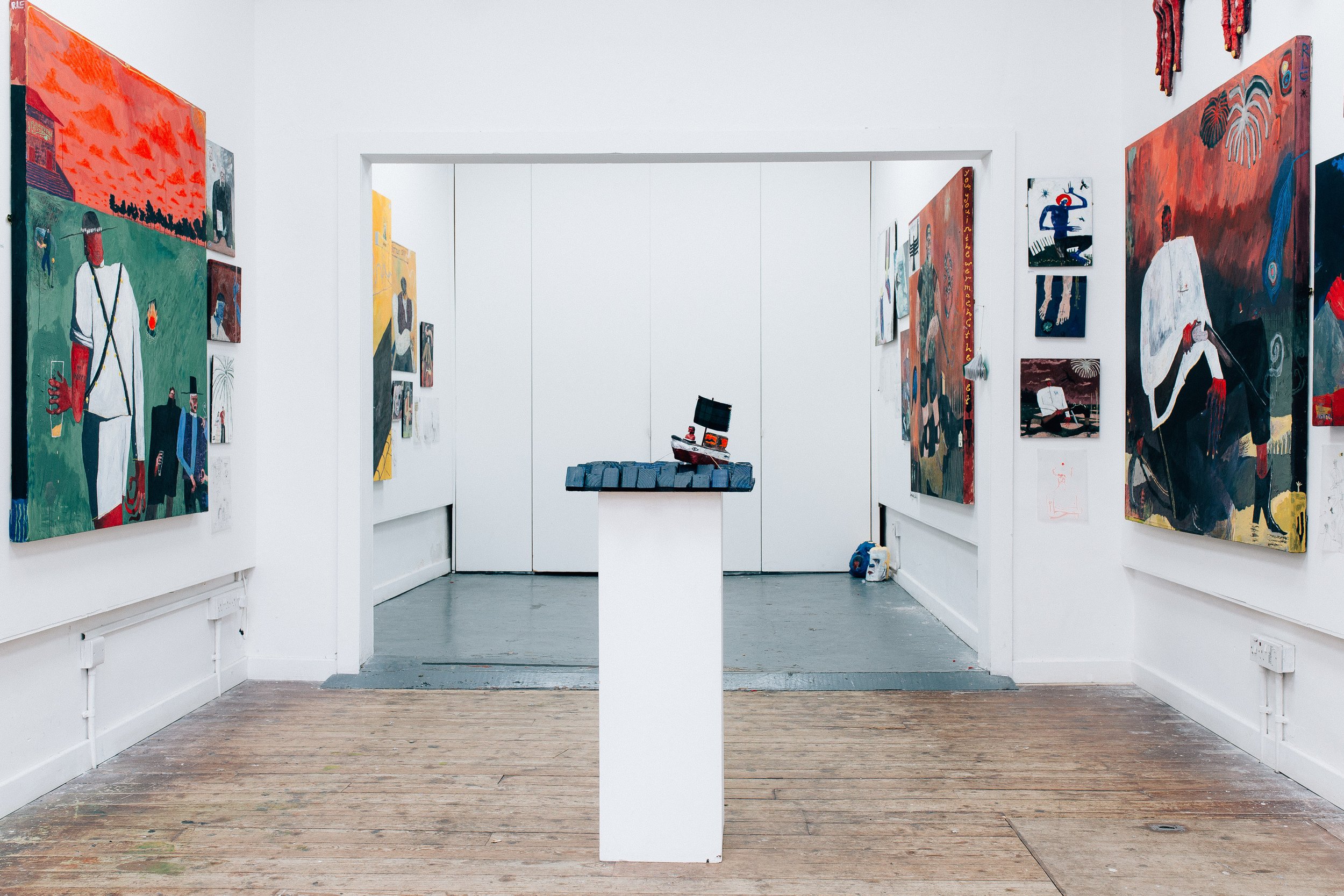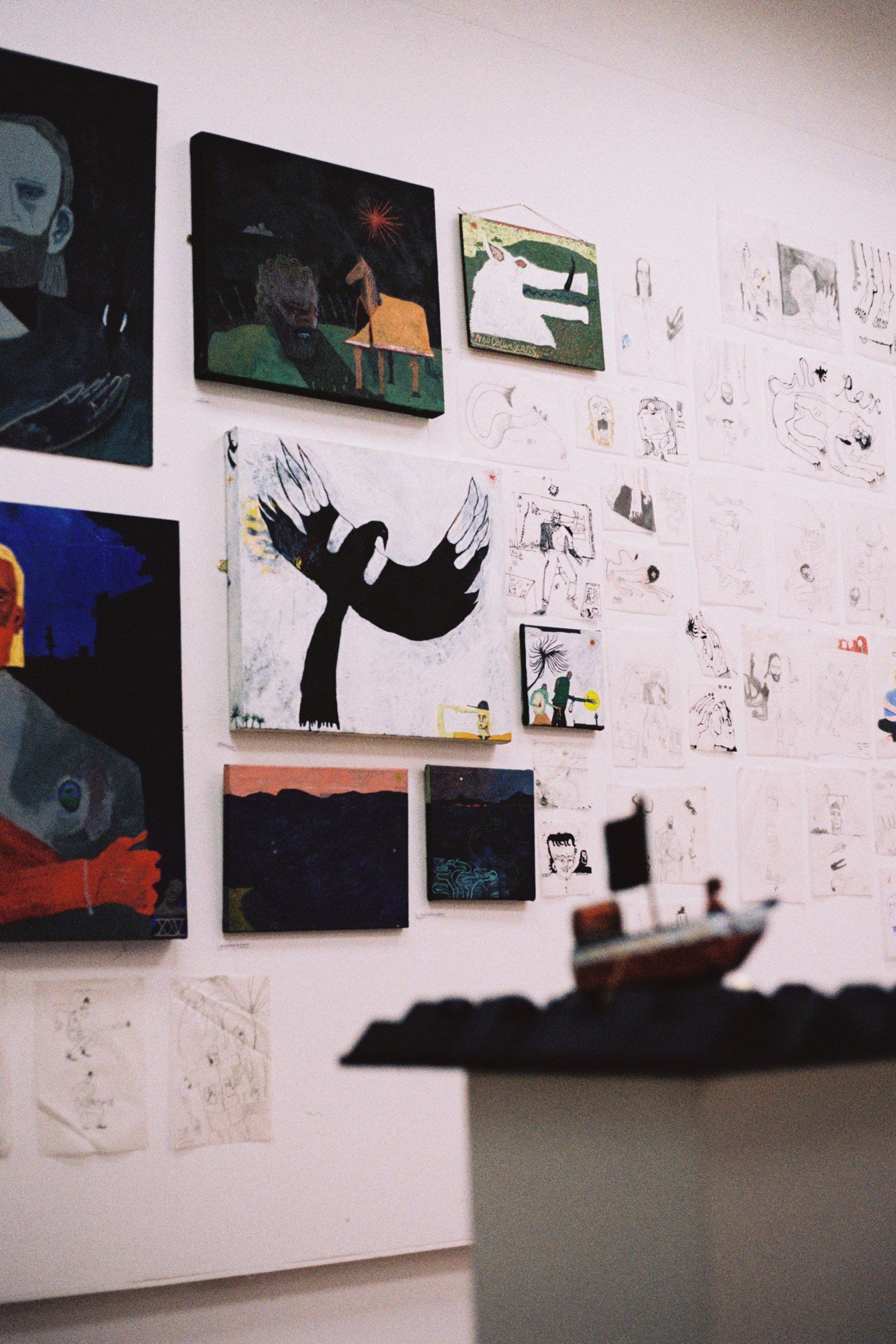Hamish Strudwick in Conversation with Artist Ruaridh Litster-Campbell
Ruaridh Litster-Campbell (b. 1997) is a self taught, multi-disciplinary artist from Argyll, now based in Glasgow. At the New Glasgow Society exhibition space in September of 2022, I was first introduced to a unique world of singular expressive power. Litster-Campbells’ figures, compositional techniques, and individual palate aid in the production of an absorbing universe of myths, symbols, and intimacies. These devices result in artworks suffused with strange seductive qualities. Ahead of his most recent exhibition on the 9th of March 2024, titled A Long Way from Elsewhere, I caught up with Ruaridh to discuss his work to date.
Portrait of Ruaridh Litster-Campbell. Photo Courtesy: Ruaridh Litster-Campbell.
HS: Would you tell me a little about yourself, and your artistic background such as how you got started? And you work in many different media, is there one in particular you enjoy working in?
RLC: I’ve always drawn but started painting properly on a larger scale around 2018. Just now I mainly paint but have been getting into more sculptural work with ceramics, plaster and concrete. I also make jewellery pieces using wax carvings. Most of the work I’m making now is probably not that different to what I used to draw when I was younger.
HS: You’re from Arduaine, Argyll, on the West coast of Scotland. Gannets for example are seen coming up frequently. Do you think the landscape and community there has affected the way you approach making art?
RLC: Yeah I think a lot of the work is influenced by home. Arduaine is a bit of a haven and I suppose that’s been reflected in the work. All the work made for my first exhibition in Edinburgh in early 2022 was made in isolation at home. Most of the work since has flowed from that. I think at the time it was a big help to get stuck into work with no outside distractions.
HS: You have a solo exhibition coming up on the 9th of March and you’ve titled it A Long Way from Elsewhere. How did you arrive at that title? And can you tell me something about the works you’re making for the show?
RLC: I was in Australia for a bit last year and while I didn’t set out for it to be about Australia, it’s probably fairly influenced by the time there. There’s still work that has evolved since being home but most of the work is pieces I couldn’t make when I was out there. I had some drawings I’d done out there when I had the chance so this bit of work was going through all of these drawings and choosing what to take further.
The name is just a phrase that has been stuck in my head a while and suited the drawings I ended up taking further. It’s primarily paintings but I wanted to include some works on paper plus some sculpture works I’d view as a sculptural equivalent of a sketch, simple plaster bandage pieces. I like the idea of putting forward a body of work as a fairly complete body, not really keeping anything back. I think it is a bit more transparent in terms of where certain paintings came from, from early sketches, especially when a lot of the work is quite personal to my own experiences.
Ruaridh Litster-Cambell, A Long Way From Elsewhere, 2024. Photo Courtesy: Ruaridh Litster-Campbell.
HS: Many of your paintings feature figures in surreal, dream-like landscapes, and there seems an implicit symbolism. How do you think this alters the atmosphere and reception of your works?
RLC: Yeah I seem to find myself putting down a lot of repeated symbols. I think it’s a method of documenting. Small things, items or motifs mean something to me and end up representing a time or feeling. I try not to think too much about other peoples perceptions, all the work is pretty selfishly for me at the moment. Maybe people can read into that symbolism in different ways or decipher it but that is up to them.
HS: There are elements of the expressionistic and surreal in your work, do you have any specific influences? Any styles, periods, or individual artists?
RLC: I’ve always been a big Hundertwasser fan, I like quite a lot of folk art. Instagram is a bit of a nuisance but it is really handy for finding art, I have hundreds of saved posts of peoples who’s work I love. Off the tops of my head I’d say lately I’ve really been liking James Owens paintings and Eleanor Faye Woods paintings, the colour and subtlety in technique in both of their works are insane. I just discovered Becky Tucker’s ceramics lately and have been pouring over them, really enjoy the scale and again the detail in her work.
Ruaridh Litster-Campbell, A Long Way From Elsewhere, 2024. Photo Courtesy: Ruaridh Litster-Campbell.
HS: I noticed that there are mythic references in your work, to Apollo and Marsyas, Apollonia, the minotaur, the arrows of St Sebastian etc. How important is myth and that kind of storytelling to you?
RLC: It’s not something I actively research. Though I am pretty interested in history.
Apollo and Marsyas interested me after I saw a painting of the story in the NGV in Melbourne. The references to St Sebastian and St Francis were after listening to O’Malleys Bar by the Bad Seeds a lot.
I am interested in the correlation between mythologising events and one’s own life. The idea that to the individual, anything that happens to you can take on the gravitas and weight of any of these myths or stories that have lasted an age.
HS: Beyond your next show in early March, do you have any new projects coming up? Anything you’re working on?
RLC: I have a few things planned. There’s always a bit of a cross over with work. There’s things I’ll revisit. It’s autobiographical so naturally fits into chapters but there’s sketches and drawings in this show that I plan to evolve more for what’s next. There’s also work that I made before the work for this show that I plan to go back to.
I want to get my teeth stuck into ceramics again.
I also have some larger sculpture ideas to explore.
Ruaridh Litster-Campbell, A Long Way From Elsewhere, 2024. Photo Courtesy: Ruaridh Litster-Campbell.





